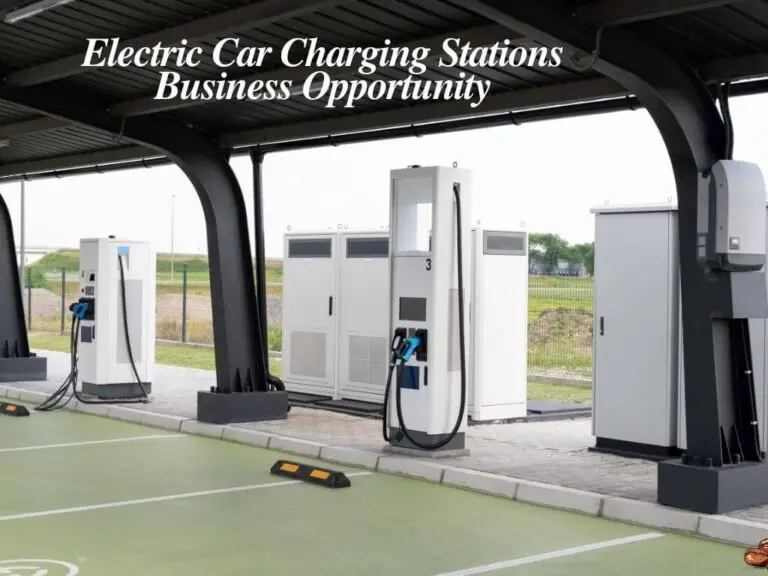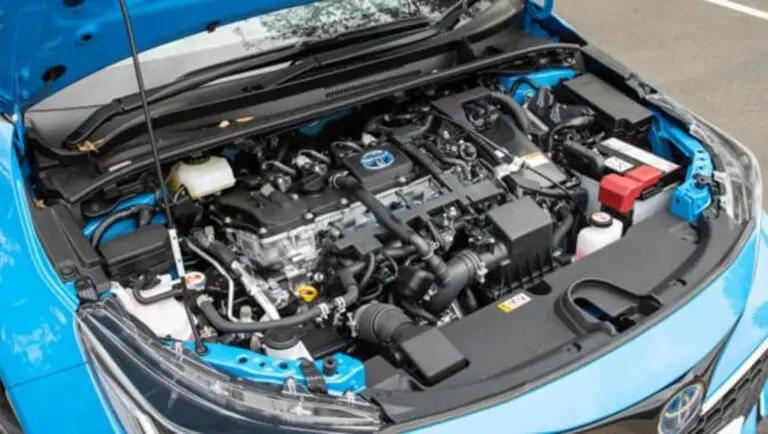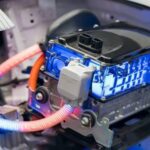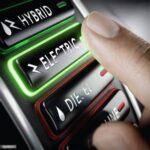Yes, it is safe to charge an electric car in a garage. Charging an electric car in a garage is a convenient and efficient way to keep your vehicle powered up, especially if you have access to a dedicated charging station.
While some safety precautions should be followed, such as using a properly installed and maintained charging system and ensuring proper ventilation for heat dissipation, charging an electric car in a garage is generally considered safe. In fact, many electric car owners charge their vehicles in their garages on a regular basis without any issues.
With the rising popularity and advancements in electric vehicles, more and more homeowners are opting to install charging stations in their garages for added convenience and peace of mind.
Understanding The Basics Of Electric Car Charging
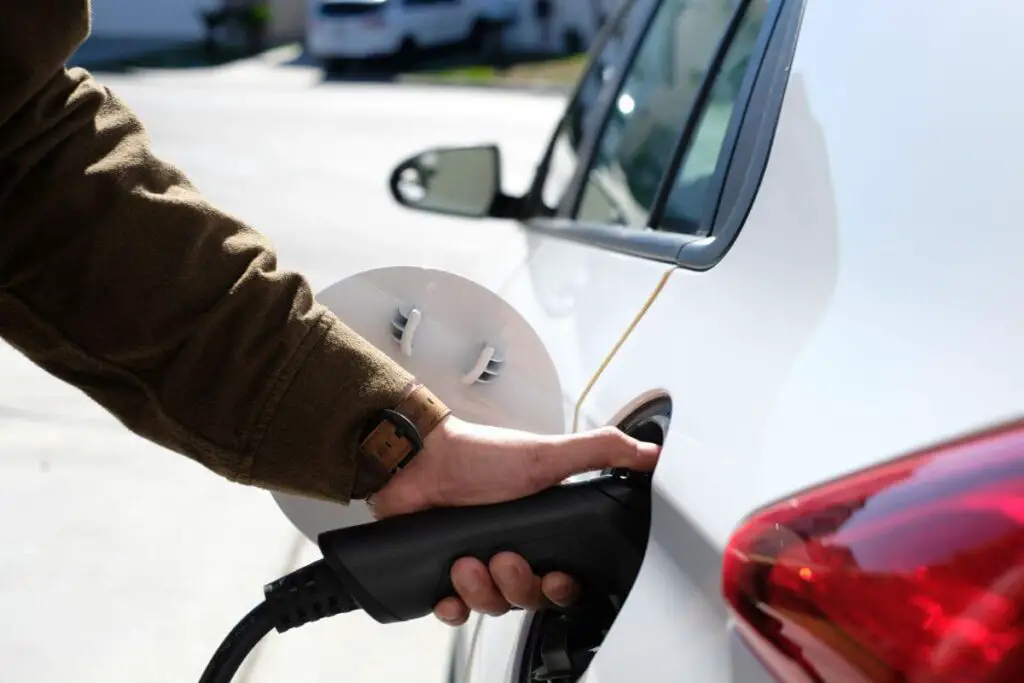
As more and more people embrace the benefits of electric vehicles (EVs), it is essential to have a clear understanding of the basics of electric car charging. Charging an electric car is much different from refueling a conventional gasoline-powered vehicle. From different types of chargers to the impact of charging speeds on safety, this article aims to shed light on the importance of safe electric car charging in your garage. Let’s dive in and explore the intricacies of electric car charging:
Types Of Electric Car Chargers
When it comes to charging your electric car, it is crucial to know the different types of chargers available. These chargers can be broadly classified into three categories:
- Level 1 Charger: Also known as a Standard Charger or Trickle Charger, this charger operates using a standard household electric outlet. While it is slowest in terms of charging speed, it is ideal for overnight charging when you have ample time.
- Level 2 Charger: A Level 2 Charger requires a dedicated 240-volt electrical circuit, similar to a dryer or electric stove. It offers a significantly faster charging speed compared to a Level 1 Charger and is commonly installed in residential garages.
- DC Fast Charger: Also known as Level 3 Charger or Supercharger, the DC Fast Charger is the fastest charging option available for electric cars. It uses direct current to quickly charge the EV battery, making it suitable for longer journeys or when you’re on the go.
Charging Speeds And Their Impact On Safety
The charging speed of your electric car can significantly impact safety, both for the vehicle and the charging equipment. It is essential to consider the following factors when charging your electric car:
- Proper Installation: Ensuring that the charging equipment, whether it’s a Level 1, Level 2, or DC Fast Charger, is correctly installed is crucial for safety. It is recommended to hire a professional electrician experienced in EV charging installation to minimize any risks.
- Charging Cable Quality: Using a high-quality charging cable that meets the standards is essential. A sturdy cable that can handle the required current load without overheating or becoming damaged is crucial for safe and efficient charging.
- Monitoring Charging Temperature: Keeping an eye on the temperature of the charging cable and charging equipment is crucial. Excessive heat can indicate potential issues, and it’s important to address them promptly to avoid any safety hazards.
Common Misconceptions About Electric Car Charging Safety
When it comes to electric car charging, there are some common misconceptions that need to be debunked:
| Misconception | Reality |
|---|---|
| Electric car charging is inherently dangerous. | When done properly, electric car charging is safe and reliable. Following the manufacturer’s guidelines and ensuring proper installation is key to safety. |
| Charging an electric car in a garage is a fire hazard. | Charging an electric car in a properly equipped and ventilated garage is not a fire hazard. It is essential to adhere to safety protocols and make sure the charging equipment is in good condition. |
| Electric car charging increases the risk of electrical overload. | With proper installation and following electrical code requirements, electric car charging does not cause electrical overload. It is important to ensure that the electrical system is capable of handling the charging load. |
In conclusion, understanding the basics of electric car charging is crucial to safely and efficiently charge your electric vehicle. By knowing the different types of chargers, the impact of charging speeds on safety, and overcoming common misconceptions, you can confidently charge your electric car in your garage and join the growing community of EV owners. Remember, prioritize safety and seek professional advice for any electric car charging concerns.
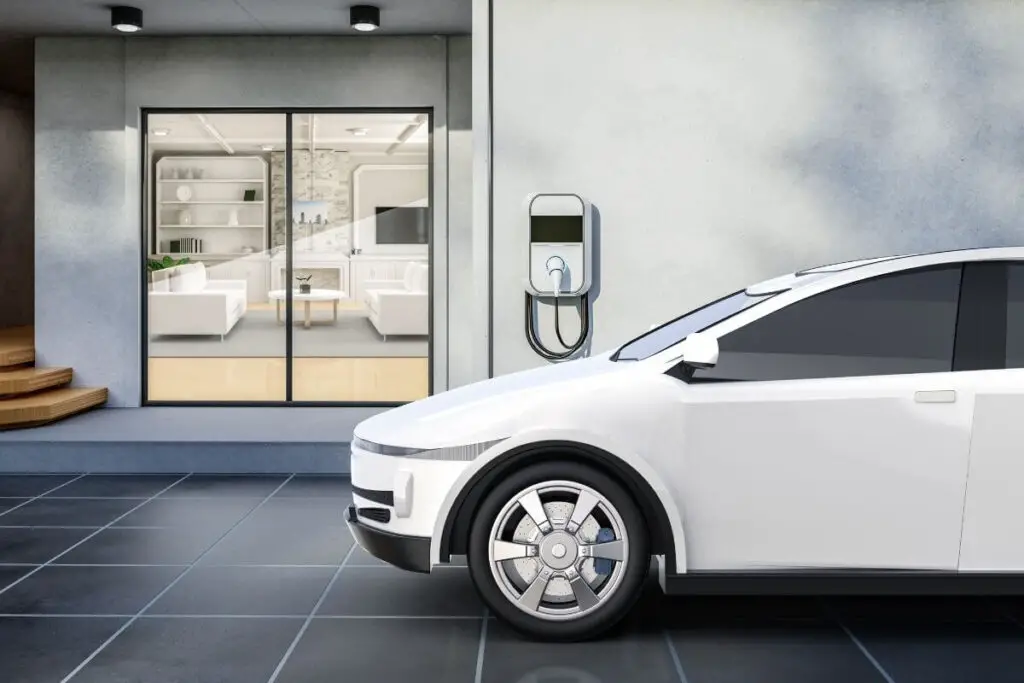
Evaluating The Safety Of Charging Electric Cars In Garages
Charging electric cars in garages can be safe if proper precautions are taken. It is important to ensure the garage is well-ventilated, use a dedicated circuit for charging, and follow manufacturer guidelines. Regular inspections of the charging equipment and wiring are also recommended to mitigate any potential risks.
Introduction: Evaluating the Safety of Charging Electric Cars in Garages When it comes to charging electric cars in garages, safety should be a top priority. There are several important factors to consider in order to ensure the safety of both the car and the garage. In this article, we will evaluate the safety aspects of charging electric cars in garages, focusing on the importance of proper electrical wiring and outlets, ensuring proper ventilation and cooling, fire safety considerations, and the impact of extreme weather conditions on charging safety.
Importance Of Proper Electrical Wiring And Outlets
Proper electrical wiring and outlets play a crucial role in the safe charging of electric cars in garages. It is essential to have an electrical system that is capable of handling the power requirements of electric car charging. Using inadequate wiring or outlets can lead to overheating and electrical hazards, putting both the car and the garage at risk. To ensure the safety of charging your electric car, consider the following:
- Ensure that your garage’s electrical system meets the requirements for charging an electric vehicle. Consult with a qualified electrician to assess your current wiring and make any necessary upgrades.
- Install dedicated outlets specifically designed for electric car charging, such as Level 2 chargers. These outlets provide higher power output and are designed to handle the load of charging an electric vehicle safely.
- Regularly inspect the wiring and outlets for any signs of wear, damage, or overheating. If you notice any issues, it is important to have them addressed promptly by a professional electrician.
Ensuring Proper Ventilation And Cooling
Proper ventilation and cooling are vital when charging an electric car in a garage. The charging process generates heat, and without proper ventilation, this heat can accumulate and potentially cause fire hazards. It is essential to promote airflow and dissipate heat effectively to minimize the risk of overheating. To ensure proper ventilation and cooling:
- Install a ventilation system in your garage to promote airflow. This can include vents, fans, or even an open window to allow warm air to escape.
- Avoid charging your electric car near flammable materials or in confined spaces that may restrict airflow.
Is It Safe to Charge Electric Car in Garage? Fire Safety Considerations
Fire safety is an important consideration when charging electric cars in garages. While the risk of fire is generally low, it is still essential to take necessary precautions to minimize any potential hazards. Consider the following fire safety measures:
- Keep a fire extinguisher readily accessible in your garage, and make sure everyone in your household knows how to use it.
- Avoid overloading electrical outlets or using extension cords, as these can increase the risk of electrical fires.
- Regularly inspect your electric car’s charging equipment and cables for any signs of damage, and replace them if necessary.
- Never leave your electric car charging unattended for extended periods of time, especially overnight or while you are away from home.
Impact Of Extreme Weather Conditions On Charging Safety
Extreme weather conditions can have an impact on the safety of charging electric cars in garages. Both high temperatures and freezing temperatures can affect battery performance and potentially pose safety risks. To ensure charging safety in extreme weather conditions:
- Avoid exposing your electric car to prolonged periods of extreme temperatures. If possible, park your car inside the garage to protect it from extreme heat or cold.
- Ensure that your garage is well-insulated to minimize the impact of temperature fluctuations.
- Consider using a garage heater or cooler, depending on your climate, to maintain a suitable charging environment.
- Refer to your electric car manufacturer’s guidelines for recommended temperature ranges and precautions for charging in extreme weather conditions.
By evaluating the safety aspects of charging electric cars in garages, including the importance of proper electrical wiring and outlets, ensuring proper ventilation and cooling, fire safety considerations, and the impact of extreme weather conditions on charging safety, you can make informed decisions to safely and efficiently charge your electric vehicle in your garage. Remember, prioritizing safety is always key when it comes to charging your electric car.
Best Practices For Safe Electric Car Charging In Garages
As electric vehicles continue to gain popularity, it’s crucial to ensure that the process of charging these cars is carried out safely, especially when charging in garages. By following some best practices, you can safeguard your garage, your vehicle, and most importantly, yourself and your loved ones. In this article, we will discuss the key safety measures to take when charging an electric car in your garage.
Location And Positioning Of The Charger
The location and positioning of the electric car charger in your garage play a vital role in ensuring safety. Consider the following:
- Choose an optimal location within your garage where the charger can be easily accessible, yet protected from potential hazards. Avoid placing the charger near flammable materials, water sources, or heat-emitting appliances.
- Ensure that the charging equipment is mounted securely on the wall or a dedicated stand, following the manufacturer’s installation guidelines. This will minimize the risk of accidental damage or tripping hazards.
- Keep the charging cable neatly coiled or hung on an appropriate hook to prevent it from being tangled or creating a tripping hazard.
Regular Inspections And Maintenance
Performing regular inspections and maintenance on your electric car charging equipment is essential for its optimal performance and safety. Consider the following:
- Inspect the charger and its components for any signs of wear and tear, such as frayed cables or loose connections. Address any issues promptly or seek professional assistance.
- Clean the charging equipment regularly to remove any dust or debris that may affect its functioning.
- Follow the manufacturer’s guidelines for maintenance, including any recommended software updates or firmware upgrades.
Use Of Surge Protectors And Safety Features
Protecting your electric car charger from power surges and other electrical issues is crucial to ensure safe charging. Consider the following:
- Install a surge protector between the charging equipment and the power outlet. This helps safeguard against power fluctuations and reduces the risk of electrical damage.
- Ensure that the charging equipment is equipped with built-in safety features, such as ground fault circuit interrupters (GFCIs) or residual current devices (RCDs). These features provide an additional layer of protection against electrical faults.
- Check that the surge protector and safety features are functioning correctly by performing regular tests as recommended by the manufacturer.
Safe Charging Habits
Practicing safe charging habits is essential to prevent accidents and ensure the longevity of your electric car’s battery. Follow these guidelines:
- Never leave your charging equipment unattended while it is in operation. Monitor the charging process and check for any unusual noises, smells, or excessive heat.
- Avoid overloading electrical circuits in your garage by using dedicated outlets for the charging equipment and refraining from using extension cords.
- Adhere to the manufacturer’s recommended charging levels and durations to prevent overcharging or overheating of the battery.
- If you notice any issues with your charging equipment, such as sparks or smoke, immediately stop charging and disconnect the power supply. Contact a qualified electrician or the manufacturer for assistance.
By following these best practices, you can confidently and safely charge your electric car in your garage, allowing you to enjoy the benefits of eco-friendly transportation without compromising on safety.
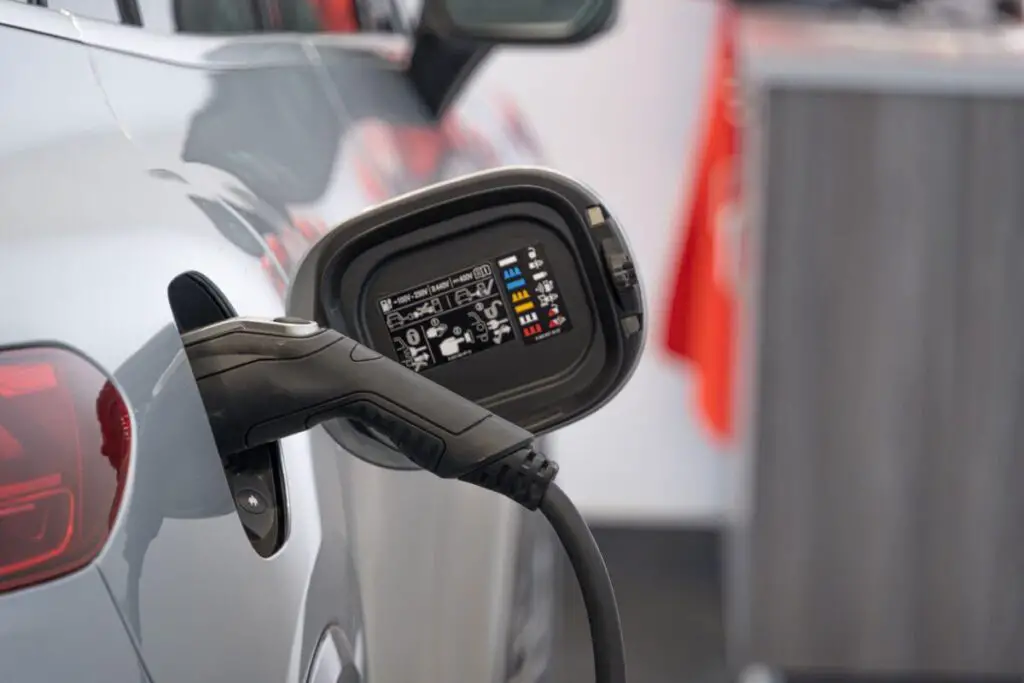
Common Safety Concerns And Solutions For Garage Charging
Charging an electric car at home in your garage is convenient and cost-effective. However, it’s natural to have certain safety concerns when it comes to garage charging. In this article, we will address some common safety concerns and provide solutions to ensure a safe charging experience for your electric car.
Overcharging And Battery Health
One of the primary concerns when charging an electric car in the garage is overcharging, which can negatively impact the battery’s health and performance. Overcharging occurs when the battery is continuously charged beyond its recommended capacity.
To avoid overcharging, it is crucial to invest in a charging station equipped with advanced features such as advanced charging algorithms and smart charging capabilities. These charging stations are designed to automatically regulate the charging process, ensuring that the battery is charged optimally without overcharging.
Additionally, keeping an eye on the battery’s state of charge can help prevent overcharging. Most electric cars have a built-in charging management system that allows you to monitor the battery’s charge level. By regularly checking the battery’s state of charge, you can unplug the charging cable once it reaches the desired level, preventing overcharging.
Preventing Electric Shock Hazards
Electric shock hazards can be a concern when charging an electric car in a garage. To address this concern, it is essential to follow some precautions:
- Ensure that the charging station and its connections are properly installed according to the manufacturer’s instructions.
- Use dedicated circuits and outlets that are specifically designed for electric car charging. This helps prevent overloading the electrical system and reduces the risk of electric shock.
- Regularly inspect the charging cables for any signs of wear or damage. Damaged cables should be replaced immediately to prevent electric shock hazards.
- Avoid charging in wet or damp conditions to minimize the risk of electric shock.
Following these precautions will significantly reduce the risk of electric shock hazards and ensure a safe charging environment in your garage.
Theft And Security Considerations
When it comes to charging your electric car in the garage, theft and security considerations may arise. To address these concerns:
- Consider installing a security system in your garage to deter potential thieves and protect your electric car and charging equipment.
- If possible, park your electric car close to a wall or another obstacle to make it more difficult for thieves to access.
- Store the charging cable safely when not in use to prevent theft.
- Consider using a lockable charging station or cable lock to add an extra layer of security.
- Make sure your garage is properly secured with sturdy doors, locks, and adequate lighting.
By implementing these security measures, you can minimize the risk of theft and ensure the safety of your electric car and charging equipment.
Handling Emergency Situations During Charging
Emergencies can happen anywhere, including during the charging process in your garage. It is important to be prepared and know how to handle such situations:
- If there is a fire or smoke during charging, immediately disconnect the charging cable and call emergency services.
- Have a fire extinguisher suitable for electrical fires readily available in your garage.
- Ensure that your garage has proper ventilation to prevent the buildup of harmful gases.
- Keep a clear path to the exit in case of an emergency evacuation.
- Regularly review and understand the emergency procedures and guidelines provided by the manufacturer of your electric car and charging equipment.
Being prepared and knowledgeable about emergency procedures will help you respond effectively and ensure your safety during charging.
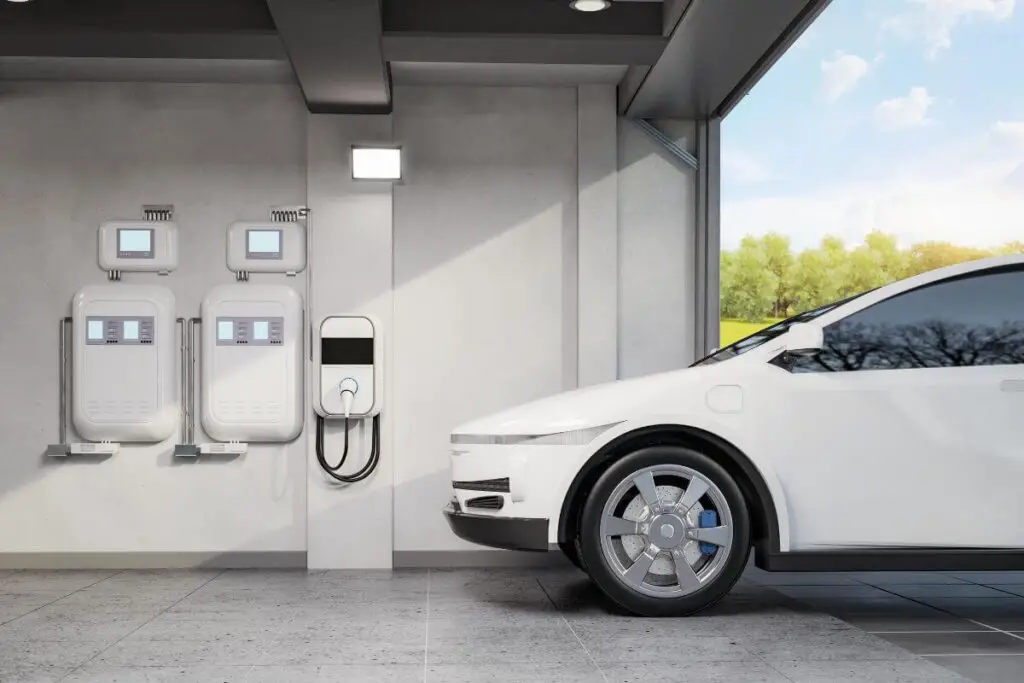
Installing Safety Features For Electric Car Charging In Garages
Installing safety features for electric car charging in garages is crucial to ensure a safe charging experience. With proper precautions such as dedicated circuits, grounded outlets, and GFCI protection, charging your electric car in the garage can be done safely and without any risks.
Installing Safety Features for Electric Car Charging in Garages With the growing popularity of electric vehicles (EVs), more and more homeowners are considering the option of charging their EVs in their garages. While it is undoubtedly convenient and cost-effective, it raises concerns about safety. Ensuring the safe charging of electric cars in garages requires the installation of appropriate safety features. In this blog post, we will explore different options for upgrading electrical systems, the installation of dedicated circuits and outlets, the importance of professional installation and permits, and additional safety measures to consider. Let’s dive into each of these topics to ensure a safe and hassle-free charging experience for your electric car.
Options For Upgrading Electrical Systems
When it comes to charging an electric car in your garage, it’s crucial to have an electrical system that can handle the increased demand. Upgrading your electrical system might be necessary to provide the power needed for charging your EV safely. Here are some options to consider:
- Upgrading the service panel: A service panel upgrade allows for higher electrical capacity, which is essential for EV charging. It involves replacing the existing panel with a larger one capable of handling the increased load.
- Adding a sub-panel: If your existing electrical system cannot accommodate the power requirements of your electric car charger, adding a sub-panel can help distribute the load more efficiently.
- Installing a higher-amperage circuit: Upgrading the amp rating of your circuit can ensure that your EV charger receives a sufficient and steady power supply.
Installation Of Dedicated Circuits And Outlets
Installing dedicated circuits and outlets for your electric car charger is crucial to prevent overload and reduce the risk of electrical hazards. Dedicated circuits are solely dedicated to supplying power to your EV charger, eliminating any potential interference from other electrical devices. Here’s what you need to know:
- Dedicated circuits: A dedicated circuit is a separate electrical circuit solely dedicated to your EV charger. It ensures that your charger gets the necessary power without overloading the existing circuits in your home.
- Outlet installation: Installing a dedicated outlet, such as a NEMA 14-50 or NEMA 6-50, near your charging location allows for safe and efficient charging. These outlets are designed to handle the high amperage required to charge electric cars.
Importance Of Professional Installation And Permits
When it comes to installing safety features for charging your electric car in the garage, professional installation and necessary permits should not be overlooked. Here’s why:
- Expertise and safety: Professional installers have the knowledge and experience to ensure that all electrical connections are made correctly and up to code. This minimizes the risk of electrical hazards, such as short circuits or fires.
- Permit requirements: Depending on your location, obtaining permits for electrical work may be required by local building codes. Working with a professional installer ensures compliance with these regulations and avoids potential penalties.
Additional Safety Measures To Consider
- Ground fault circuit interrupters (GFCIs): Installing GFCIs adds an extra layer of protection by immediately shutting off the power if there is an electrical fault or leakage.
- Overcurrent protection devices: Fuse boxes or circuit breakers with appropriate ratings should be installed to protect against overloading and short circuits.
- Proper cable management: Ensuring that cables are properly managed and organized reduces the risk of tripping hazards and potential damage to the cables themselves.
In conclusion, when charging your electric car in your garage, it is essential to prioritize safety by installing the necessary safety features. Upgrading electrical systems, installing dedicated circuits and outlets, seeking professional installation, obtaining permits, and implementing additional safety measures are all critical steps towards ensuring a safe charging environment for your electric vehicle. So, take the necessary steps and enjoy the convenience of charging your electric car in the comfort of your own garage, knowing that you have taken the necessary precautions for a safe charging experience.
Final Verdict
Charging an electric car in a garage is generally safe as long as certain precautions are taken. Ensuring that the charging equipment and electrical system are in good condition, following manufacturer guidelines, and having a professional inspection can minimize any potential risks.
It is important to be aware of ventilation, heat dissipation, and proper cable management to avoid any accidents or damage to the vehicle or property. By following these guidelines, electric car owners can safely charge their vehicles in the garage without any major concerns.
Frequently Asked Questions
Should Electric Car Charger Be Inside Or Outside Garage?
The electric car charger can be inside or outside the garage based on personal preference and available space.
Is It Safe To Charge Ev Indoors?
Charging an EV indoors is generally safe as long as you follow proper precautions and use the right equipment. Make sure to install a dedicated charging station, follow manufacturer guidelines, and ensure good ventilation in the area.
Can I Charge My Car In A Closed Garage?
Yes, you can charge your car in a closed garage. However, ensure there is proper ventilation to prevent buildup of harmful gases. It’s important to follow safety guidelines and consult an electrician for installation and charging recommendations.
Is It Safe To Charge An Electric Car In A Garage?
Charging an electric car in a garage is generally safe as long as certain precautions are taken. Ensure that the charging equipment is installed and maintained properly by a professional electrician. Use a dedicated circuit for charging and avoid using extension cords.
Keep flammable materials away from the charging area and monitor the charging process for any signs of overheating or malfunction.

